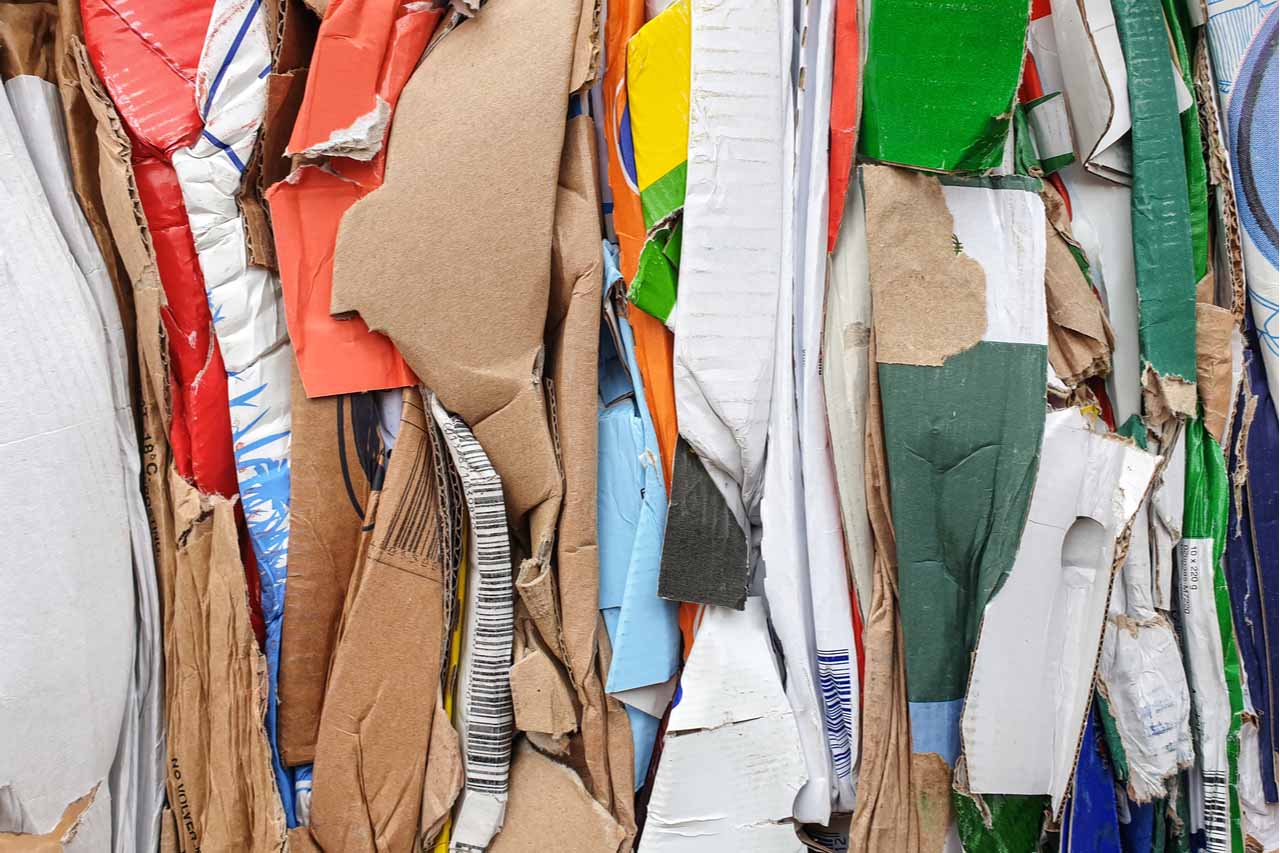
Experts from Bloomberg, TetraPak and more forecasted stable-to-higher box shipments and analyzed paper fiber recycling during a recent webinar. | Shu Ba/Shutterstock
Volumes of OCC and mixed paper are shifting with societal and economic trends, industry experts said during a paper industry update webinar presented by the Recycled Materials Association.
Box shipments in 2025 are likely to get off to their usual slow start, said Ryan Fox, corrugated packaging market analyst at Bloomberg Intelligence, during the Jan. 15 webinar. Historically February has been the weakest month of the year for box shipments, while October is the strongest, he said, ahead of the holiday season. “So the first quarter, we think, is going to be pretty mild.”
For full-year 2025, Bloomberg estimates box shipments at 385 billion square feet and more than 31 million tons, an increase of 0.5%-1% over 2024 levels. In a best-case scenario, Bloomberg sees “a substantial rebound, largely fueled by optimism in the new presidency,” with box shipments potentially increasing as much as 1.5-2%. However, in a worst-case scenario – colored by potential tariffs, which President Trump said will begin Feb.1 – shipments could decrease by 1.5%.
Nevertheless, Fox added, paper company executives have largely said they don’t see “any observable things happening in 2025 that are going to cause a major inflection in demand.” In 2024, smaller companies including Packaging Corporation of America had a good year relative to the larger mill systems, a trend Bloomberg expects to continue. Fox said Bloomberg is bullish for price increase nominations announced in late 2024.
Box shipments closely correlate with disposable income – “people buy stuff when they have money,” Fox said. Because consumers also tend to buy items to outfit a new home, this also ties in with homebuying activity, which has been subdued amid elevated interest rates as people opt to remodel or redecorate rather than move.
E-commerce helped support a boom in box demand starting in 2020, though quarterly shipments dropped in fourth-quarter 2022, Fox said.
Healthy OCC recycling rates can still be improved
“If it wasn’t for OCC, I don’t think there would be a recovered fiber business,” said Myles Cohen, founder and managing director of advisory firm Circular Ventures. Yet used corrugated boxes are usually at or near the top of lists of most commonly landfilled packaging material, he said.
Although the American Forest and Paper Association recently revised its methodology for determining the OCC recycling rate, Cohen said he thinks it still is too high. Cohen and Fox both helped develop the new methodology, and Cohen opined on the old method last year. He added that the methodology for the total paper recycling rate also needs to be revisited and is 35%-45% rather than the currently quoted 65%.
Focusing growth efforts on institutional, commercial and industrial sources – collectively known as ICI – would make a significant impact in collection rates, Cohen said, adding that landfilled material from these sources accounts for three times the residential volumes headed for landfills. For example, Walmart alone recycles more OCC than all residential sources combined, he said. Only 32% of OCC and 23% of mixed paper is being recovered from residential sources, he said, citing data from The Recycling Partnership.
And despite OCC representing at least half of all material passing through MRFs, the paper industry has not typically been supportive of extended producer responsibility policies. But it should seek a “seat at the table” as these policies are written, he said.
TetraPak makes the case for poly-coated paper
Paper packaging coated with a polymer to create a moisture barrier historically has seen inconsistent collection and recovery, said Jason Pelz, vice president of sustainability at food and beverage processor TetraPak.
Design guidance for recyclability is limited for poly-coated paper, and he said those in end markets who don’t see this material as a valuable recycling commodity “don’t quite understand what’s possible with it.”
TetraPak is part of the Poly Coated Paper Alliance, a group of companies working to encourage recycling of poly-coated paper. The group is working with paper mills to show that poly-coated paper could be a replacement for recycled fiber commodities that are in decline, such as office paper, and works with MRFs and municipalities to expand recyclability and acceptance, Pelz said.
Some MRFs are already sorting poly-coated paper into its own grade, Pelz said, “so we know it can be done. It takes an intervention; whether that’s equipment, whether that’s people, whether it’s a combination, it can be done.” And as end markets and education both grow, he said, more MRFs will be able to segregate this material.
In 2024, the group conducted RFID testing to track material movement throughout MRFs, along with bale audits to determine levels of poly-coated paper. In addition, the group is exploring opportunities for recovering the residual polymer at paper mills. “In some cases, there are folks out there who want the poly more than they want the paper.”
Graphic Packaging provides update on Waco mill
The new Graphic Packaging mill in Waco, Texas, is on track to start up in the fourth quarter of 2025, and the company will begin pre-buying inventory in April or May, said Ed Tucciarone, director at Graphic Packaging. The company consumes about 1.4 million tons of recovered fiber each year, with about half being OCC and the rest mostly pre-consumer grades and box cuts.
Of the three pulpers, a drum pulper will enable the facility to accept poly-coated paper fiber, and a filler pulper will allow consumption of bales with any combination of box cuts and unbleached paperboard as well as OCC, Tucciarone said. While most of the box cuts in bleached paperboard will be internally sourced, the company will buy up to 20,000 tons each month from Texas suppliers, he added.

